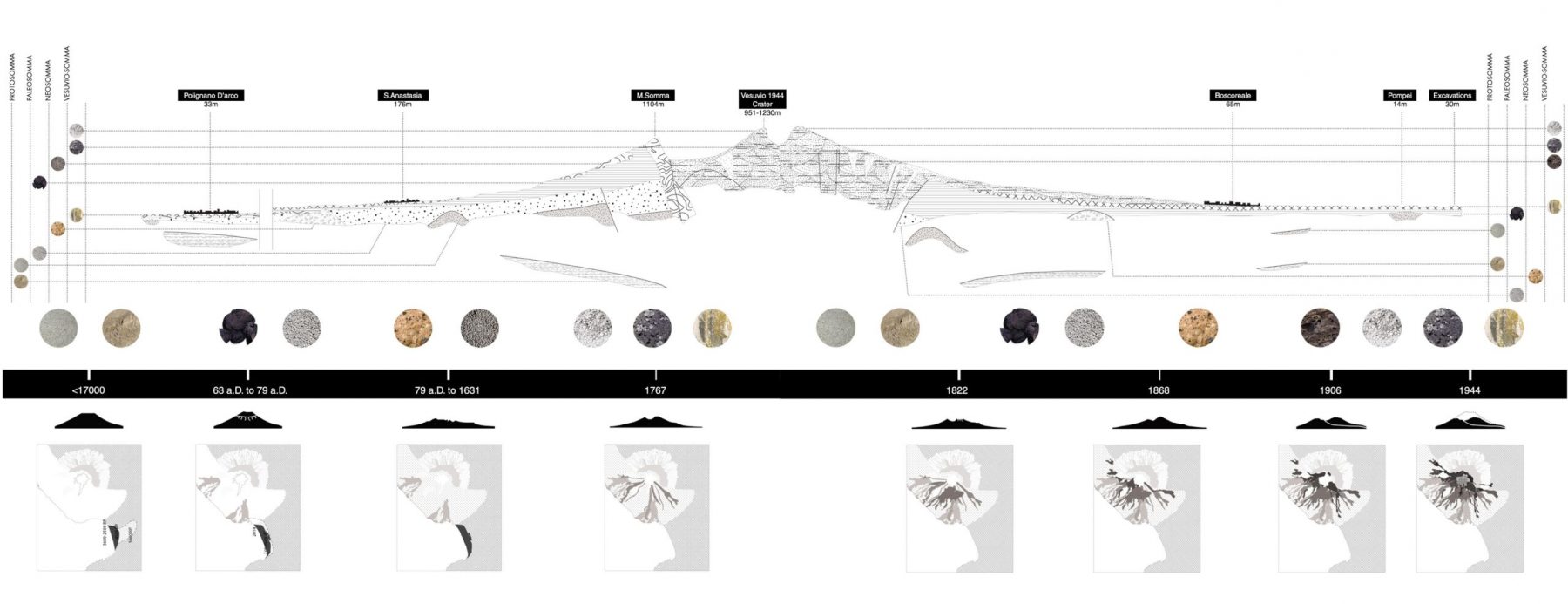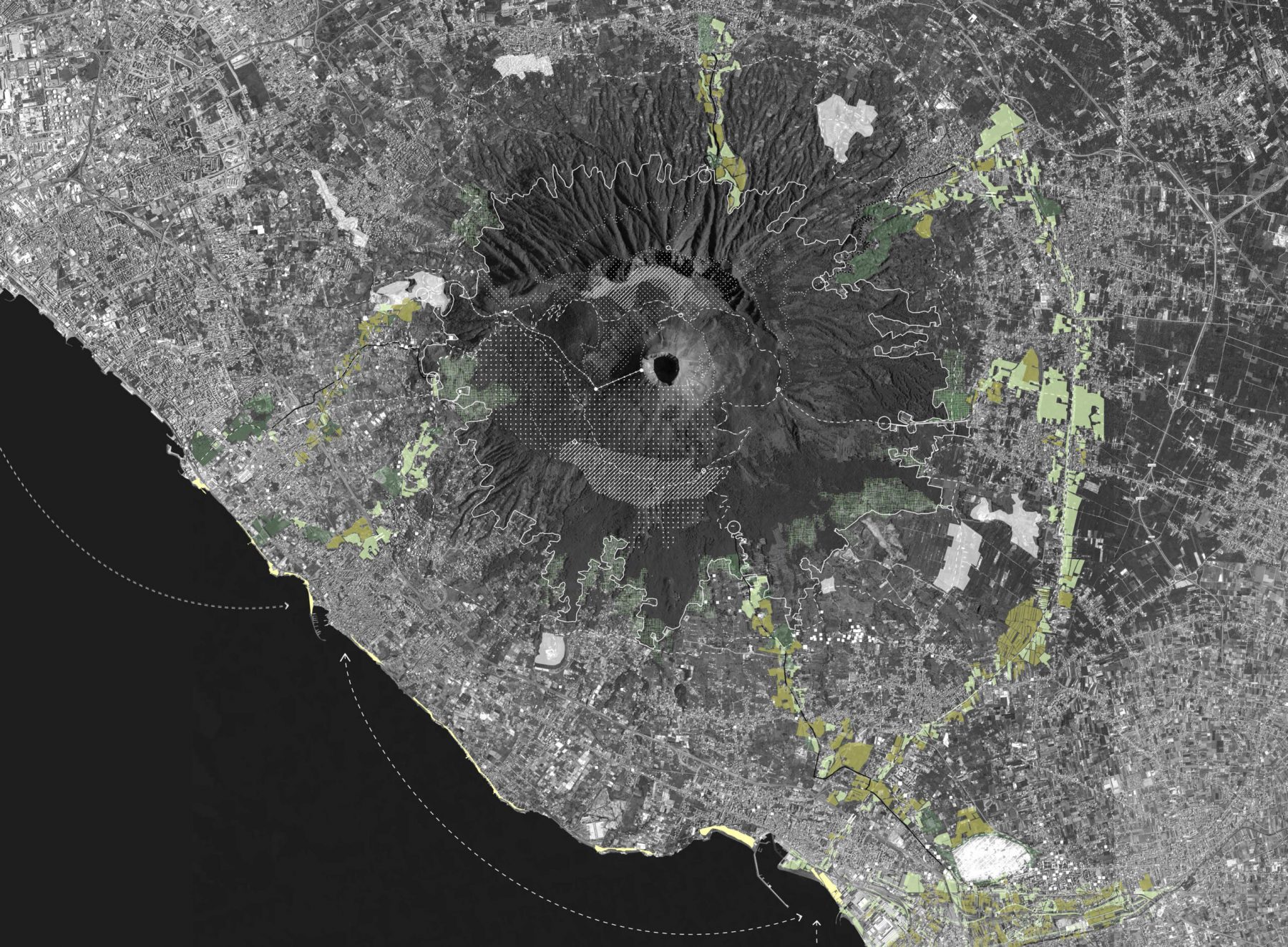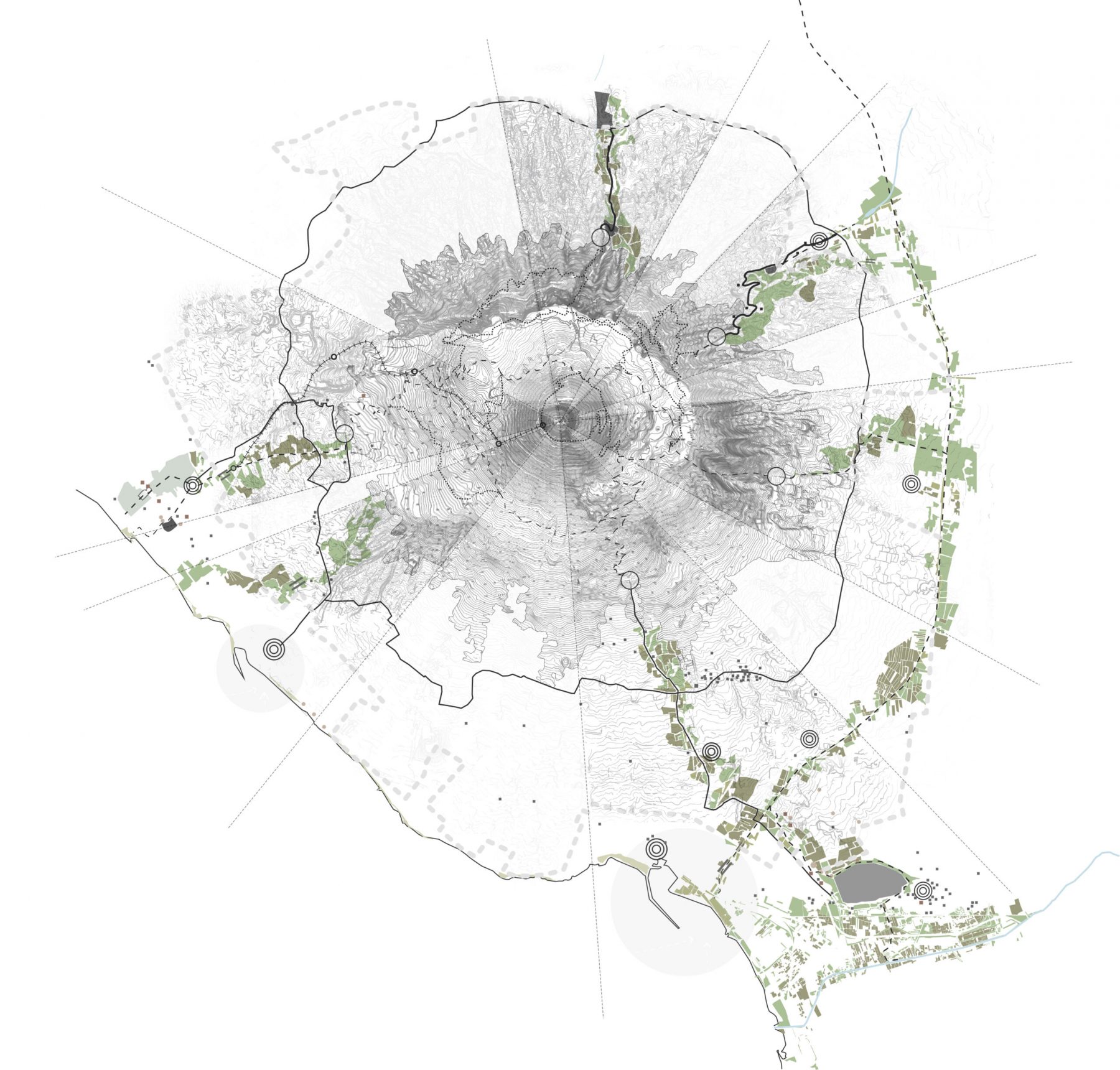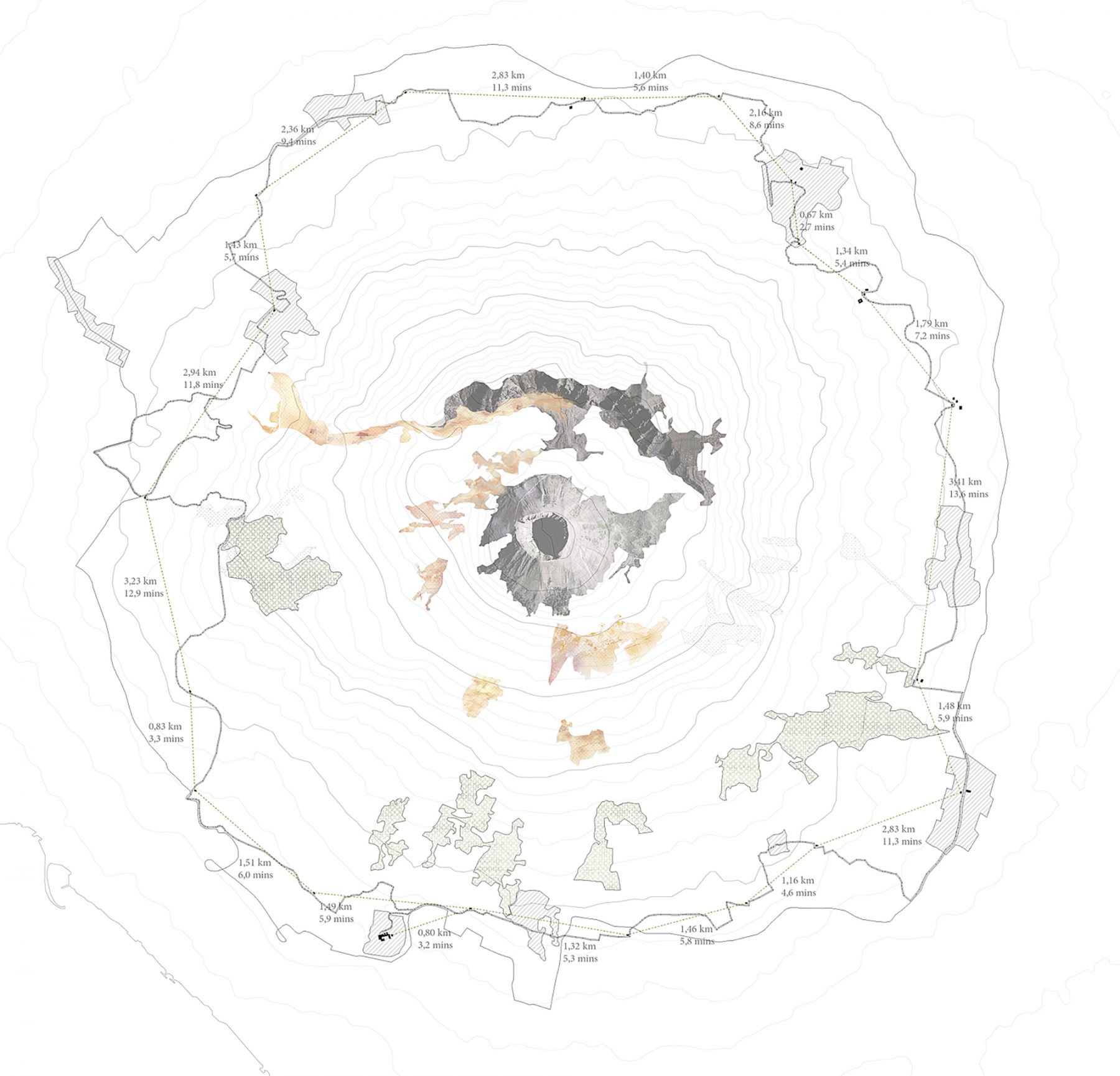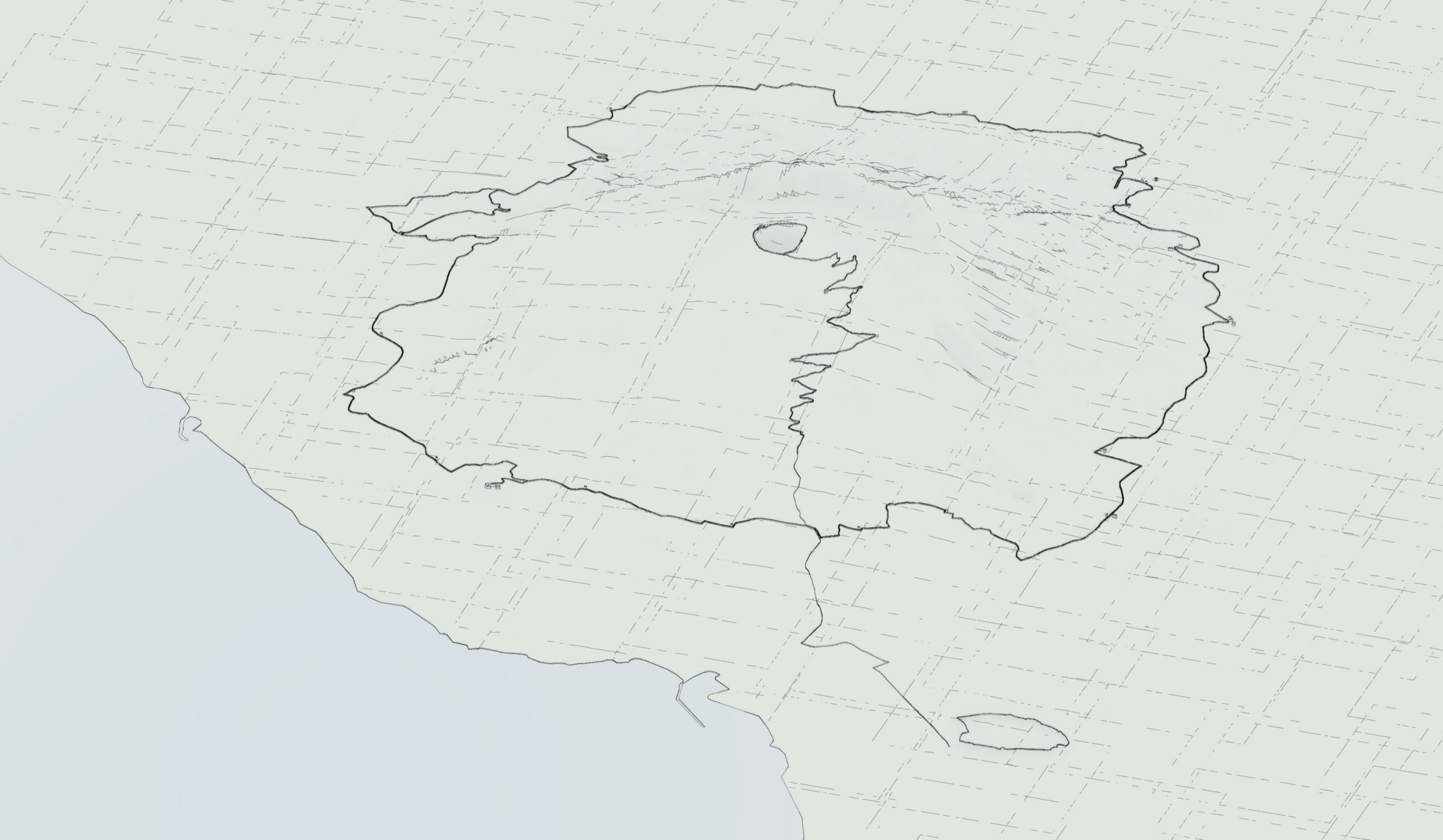
Landscape & Landform of Vesuvius
Year
2015
Location
Naples, Italy
Collaborators
Sunay Altıntepe, Cem Özbaşaran, Gizem Kadıoğlu, Elena Alexsandrov, Juan Esteve, Carmen Mandado Espiñeira, Selin Serce, Francesca Fantini, Tommaso Paino
Typology
Urban Development
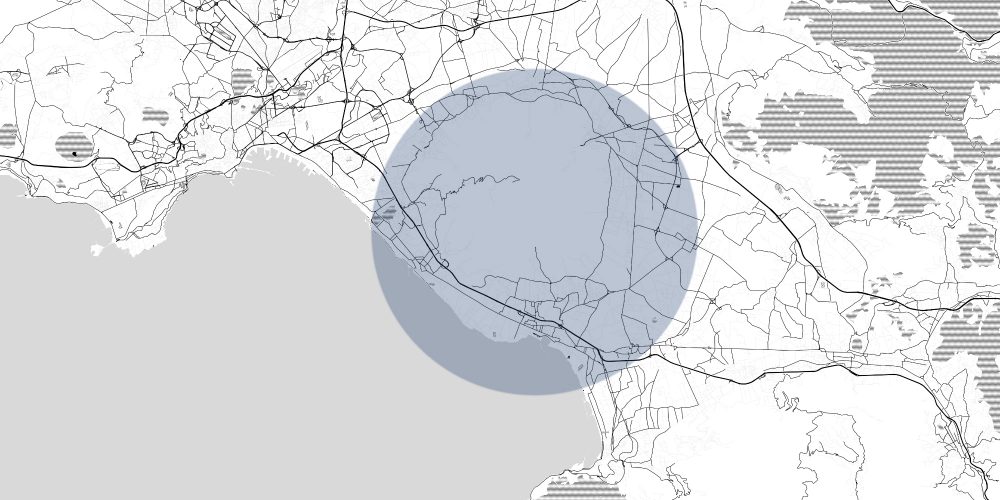
The landscape and landform of Vesuvius requires a decent comprehension of the existing elements and how they transform throughout history. The analytical approach of variable factors; focuses on the relation between nature and human such as the lava flows and their impacts, economic developments mainly in the agricultural area, the system of woodlands and geological/biological aspects of the region have led us realize how they are intertwined. This conjunct relation created problems in the region such as the disorganized land usage of the periphery, which amplifies significant social and urban disconnections.
The lack of existing public facilities and resources have constricted the interest in this area which triggered the enhancement of illegal presence of buildings inside the natural park. To solve them, the natural and artificial layers of Vesuvius were studied as a unified system and it was divided in “Transversalities’’ to transform distributed maps and enable nodes of attraction along the mountain.
The project focuses on two of these systems and the slow mobility ring that connects them which include the main archeological sites and examines profoundly the impact of the landscape on settlements, in order to generate solutions in these areas for contemporary urban demands. With these ‘’paths’’ and ‘’systems’’ the aim is to improve the quality of accessibility to the volcano from different parts of the region such as the coast and the city, and linking strong formations in the area.
The traces of settlements are still present and are able to create a unique spiritual sense within the area. The view of the volcano from Pompeii is monumental and the road to Vesuvius is considered as a spiritual and visual experience, yet these feelings are lost when reached to the border of the National Park. Considering the wilderness of the area, the historical path is defined for people who want more natural and sportive experience and to reach this only pedestrian access is allowed inside this historical path. Interventions on the path are allocated due to distance, and indicated due to landscape, landform and visual connections. The project progresses as platforms, resting points and facilities for the guests, to experience visual, spiritual and natural characteristics of Vesuvius.
